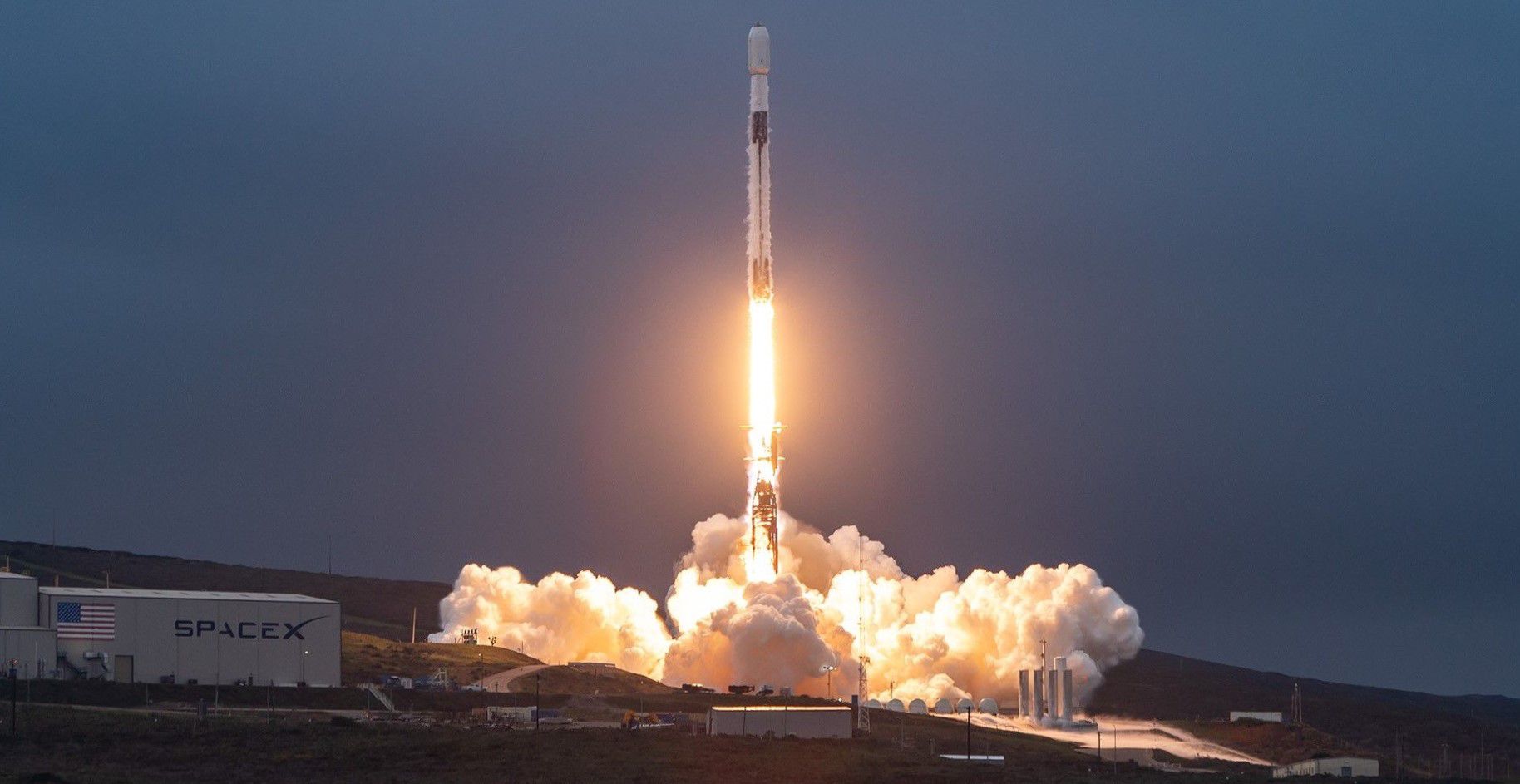
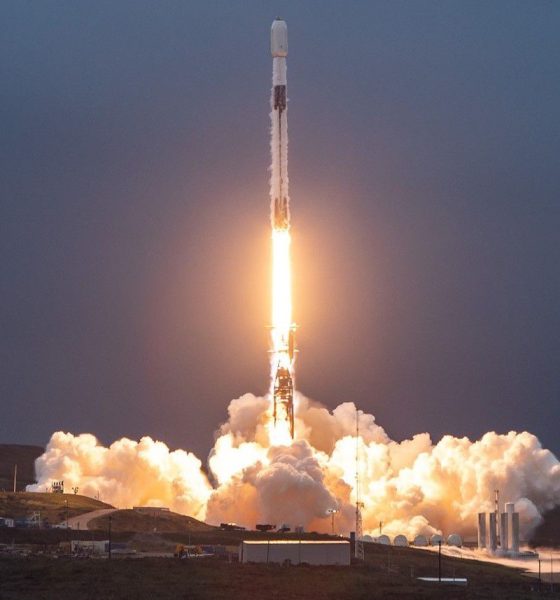
News
SpaceX launches first Starlink mission of 2023 after eight delays
A Falcon 9 rocket has successfully launched SpaceX’s Starlink 2-4 mission after seven delays pushed it from November 2022 to January 2023.
Starlink 2-4 was originally scheduled to launch as early as November 18th, 2022, but was delayed shortly after its Falcon 9 rocket conducted a static fire test. The delay was indefinite, and that specific rocket ultimately launched a different commercial payload in late December. The internet satellite launch was finally rescheduled for January 9th, 2023, kicking off a string of additional delays. Weather delayed the January 9th attempt. Issues with Falcon 9’s second stage delayed the January 10th attempt. Additional “pre-launch checkouts” delayed the launch from January 11th to the 14th, which was then pushed to January 15th for “constellation optimization.“
Poor weather delayed Starlink 2-4 from January 15th to January 18th, and SpaceX eventually delayed the mission to January 19th without explanation. On January 19th, SpaceX even delayed Starlink 2-4 an eighth time, from 7:23 am PST to 7:43 am PST. But at long last, Starlink 2-4 did, in fact, lift off at 7:43 am PST, ending the longest streak of delays experienced by SpaceX in several years.
The update that's rolling out to the fleet makes full use of the front and rear steering travel to minimize turning circle. In this case a reduction of 1.6 feet just over the air— Wes (@wmorrill3) April 16, 2024
In a rare twist, the first delay caused SpaceX to shuffle booster assignments, and Starlink 2-4 wound up with B1075. B1075 had never flown before, making Starlink 2-4 the second Starlink mission that has debuted a new Falcon booster. Ordinarily, SpaceX has always reserved new boosters – of which only a handful are built annually – for its more conservative customers. The US military in particular was slow to warm up to the idea of flying operational “national security” payloads on reused Falcon boosters, and often required (and paid for) new boosters whenever possible.
But even that wall mostly crumbled in 2022. SpaceX debuting another new Falcon 9 booster on its own low-priority Starlink mission is perhaps the best evidence of that. NASA and the US military have simply come to trust SpaceX’s flight-proven Falcon boosters, and no longer feel the need to reserve every new Falcon 9.
Falcon 9 booster B1075 ultimately aced its orbital-class launch debut and touched down on drone ship Of Course I Still Love You (OCISLY) about nine minutes after liftoff. Assuming the seas are calm enough for B1075 to survive the return to Port of Long Beach, it likely has a long life of 15+ launches ahead of it. The Falcon upper stage launched by B1075 eventually reached low Earth orbit (LEO) and deployed another 51 Starlink V1.5 satellites about 30 minutes after liftoff. Starlink 2-4 should leave SpaceX with almost 3400 working Starlink satellites in orbit.
OCISLY gets an upgrade
B1075’s landing also revealed upgrades SpaceX has made to drone ship OCISLY since it was last used in October 2022. Harry Stranger first discovered the changes with satellite imagery, which revealed that SpaceX was upgrading OCISLY’s rectangular with angular ‘wings’. The wings appear to be identical to those installed on SpaceX’s newest drone ship, A Shortfall of Gravitas. ASOG debuted in mid-2021 with a number of upgrades not present on SpaceX’s two other drone ships. Most were intended to improve the ship’s resiliency, availability, and autonomy.
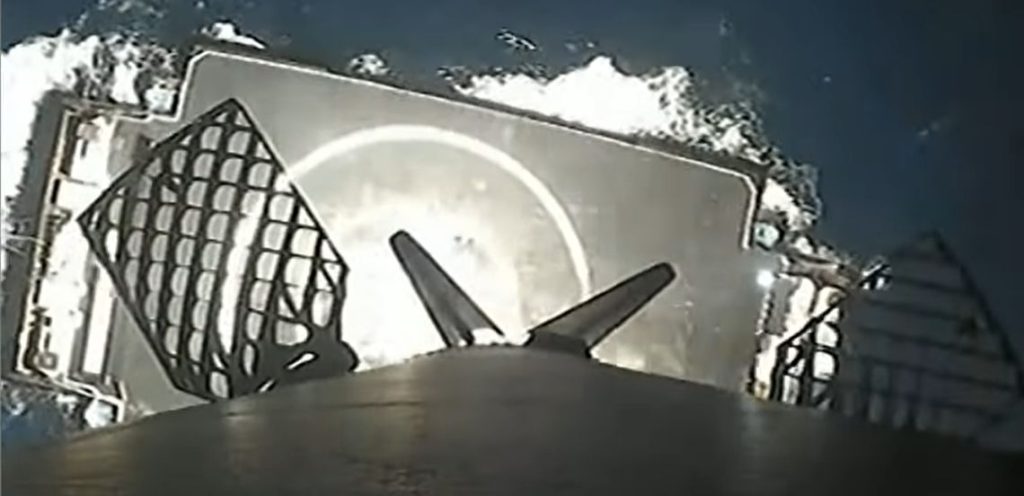
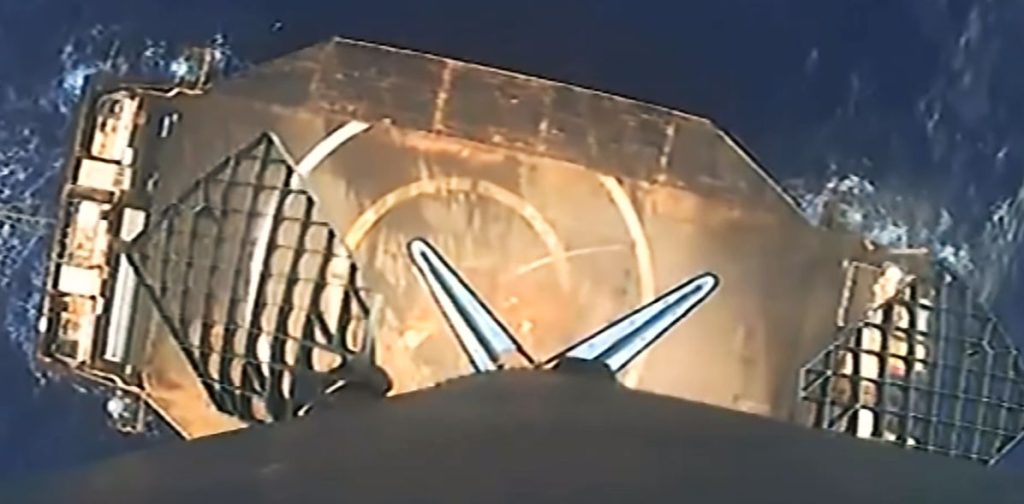
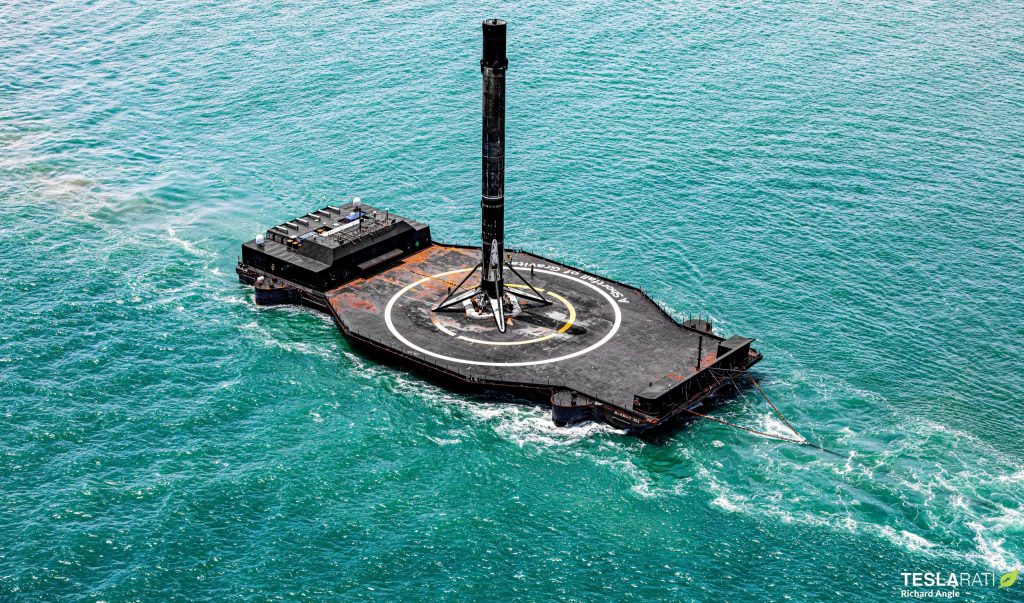
According to photographer Jerry Pike, the angular wings on ASOG (and now OCISLY) could make the drone ship much easier to tow. Reducing drag could also increase the effectiveness of their existing propulsion systems, potentially allowing them to maintain their position in harsher sea conditions and stronger currents than before. SpaceX CEO Elon Musk has previously stated that the ultimate goal is a fully-autonomous drone ship capable of heading to sea, recovering Falcon boosters, and returning to port without human intervention.
There is no evidence that SpaceX is any closer to that goal since ASOG’s debut 16 months ago. Nonetheless, OCISLY’s upgrades should improve the drone ship’s usability as SpaceX attempts to launch (and land) up to 100 rockets in 2023.

News
Tesla FSD fleet is nearing 7 billion total miles, including 2.5 billion city miles
As can be seen on Tesla’s official FSD webpage, vehicles equipped with the system have now navigated over 6.99 billion miles.

Tesla’s Full Self-Driving (Supervised) fleet is closing in on almost 7 billion total miles driven, as per data posted by the company on its official FSD webpage.
These figures hint at the massive scale of data fueling Tesla’s rapid FSD improvements, which have been quite notable as of late.
FSD mileage milestones
As can be seen on Tesla’s official FSD webpage, vehicles equipped with the system have now navigated over 6.99 billion miles. Tesla owner and avid FSD tester Whole Mars Catalog also shared a screenshot indicating that from the nearly 7 billion miles traveled by the FSD fleet, more than 2.5 billion miles were driven inside cities.
City miles are particularly valuable for complex urban scenarios like unprotected turns, pedestrian interactions, and traffic lights. This is also the difference-maker for FSD, as only complex solutions, such as Waymo’s self-driving taxis, operate similarly on inner-city streets. And even then, incidents such as the San Francisco blackouts have proven challenging for sensor-rich vehicles like Waymos.
Tesla’s data edge
Tesla has a number of advantages in the autonomous vehicle sector, one of which is the size of its fleet and the number of vehicles training FSD on real-world roads. Tesla’s nearly 7 billion FSD miles then allow the company to roll out updates that make its vehicles behave like they are being driven by experienced drivers, even if they are operating on their own.
So notable are Tesla’s improvements to FSD that NVIDIA Director of Robotics Jim Fan, after experiencing FSD v14, noted that the system is the first AI that passes what he described as a “Physical Turing Test.”
“Despite knowing exactly how robot learning works, I still find it magical watching the steering wheel turn by itself. First it feels surreal, next it becomes routine. Then, like the smartphone, taking it away actively hurts. This is how humanity gets rewired and glued to god-like technologies,” Fan wrote in a post on X.
News
Tesla starts showing how FSD will change lives in Europe
Local officials tested the system on narrow country roads and were impressed by FSD’s smooth, human-like driving, with some calling the service a game-changer for everyday life in areas that are far from urban centers.

Tesla has launched Europe’s first public shuttle service using Full Self-Driving (Supervised) in the rural Eifelkreis Bitburg-Prüm region of Germany, demonstrating how the technology can restore independence and mobility for people who struggle with limited transport options.
Local officials tested the system on narrow country roads and were impressed by FSD’s smooth, human-like driving, with some calling the service a game-changer for everyday life in areas that are far from urban centers.
Officials see real impact on rural residents
Arzfeld Mayor Johannes Kuhl and District Administrator Andreas Kruppert personally tested the Tesla shuttle service. This allowed them to see just how well FSD navigated winding lanes and rural roads confidently. Kruppert said, “Autonomous driving sounds like science fiction to many, but we simply see here that it works totally well in rural regions too.” Kuhl, for his part, also noted that FSD “feels like a very experienced driver.”
The pilot complements the area’s “Citizen Bus” program, which provides on-demand rides for elderly residents who can no longer drive themselves. Tesla Europe shared a video of a demonstration of the service, highlighting how FSD gives people their freedom back, even in places where public transport is not as prevalent.
What the Ministry for Economic Affairs and Transport says
Rhineland-Palatinate’s Minister Daniela Schmitt supported the project, praising the collaboration that made this “first of its kind in Europe” possible. As per the ministry, the rural rollout for the service shows FSD’s potential beyond major cities, and it delivers tangible benefits like grocery runs, doctor visits, and social connections for isolated residents.
“Reliable and flexible mobility is especially vital in rural areas. With the launch of a shuttle service using self-driving vehicles (FSD supervised) by Tesla in the Eifelkreis Bitburg-Prüm, an innovative pilot project is now getting underway that complements local community bus services. It is the first project of its kind in Europe.
“The result is a real gain for rural mobility: greater accessibility, more flexibility and tangible benefits for everyday life. A strong signal for innovation, cooperation and future-oriented mobility beyond urban centers,” the ministry wrote in a LinkedIn post.
News
Tesla China quietly posts Robotaxi-related job listing
Tesla China is currently seeking a Low Voltage Electrical Engineer to work on circuit board design for the company’s autonomous vehicles.

Tesla has posted a new job listing in Shanghai explicitly tied to its Robotaxi program, fueling speculation that the company is preparing to launch its dedicated autonomous ride-hailing service in China.
As noted in the listing, Tesla China is currently seeking a Low Voltage Electrical Engineer to work on circuit board design for the company’s autonomous vehicles.
Robotaxi-specific role
The listing, which was shared on social media platform X by industry watcher @tslaming, suggested that Tesla China is looking to fill the role urgently. The job listing itself specifically mentions that the person hired for the role will be working on the Low Voltage Hardware team, which would design the circuit boards that would serve as the nervous system of the Robotaxi.
Key tasks for the role, as indicated in the job listing, include collaboration with PCB layout, firmware, mechanical, program management, and validation teams, among other responsibilities. The role is based in Shanghai.
China Robotaxi launch
China represents a massive potential market for robotaxis, with its dense urban centers and supportive policies in select cities. Tesla has limited permission to roll out FSD in the country, though despite this, its vehicles have been hailed as among the best in the market when it comes to autonomous features. So far, at least, it appears that China supports Tesla’s FSD and Robotaxi rollout.
This was hinted at in November, when Tesla brought the Cybercab to the 8th China International Import Expo (CIIE) in Shanghai, marking the first time that the autonomous two-seater was brought to the Asia-Pacific region. The vehicle, despite not having a release date in China, received a significant amount of interest among the event’s attendees.








